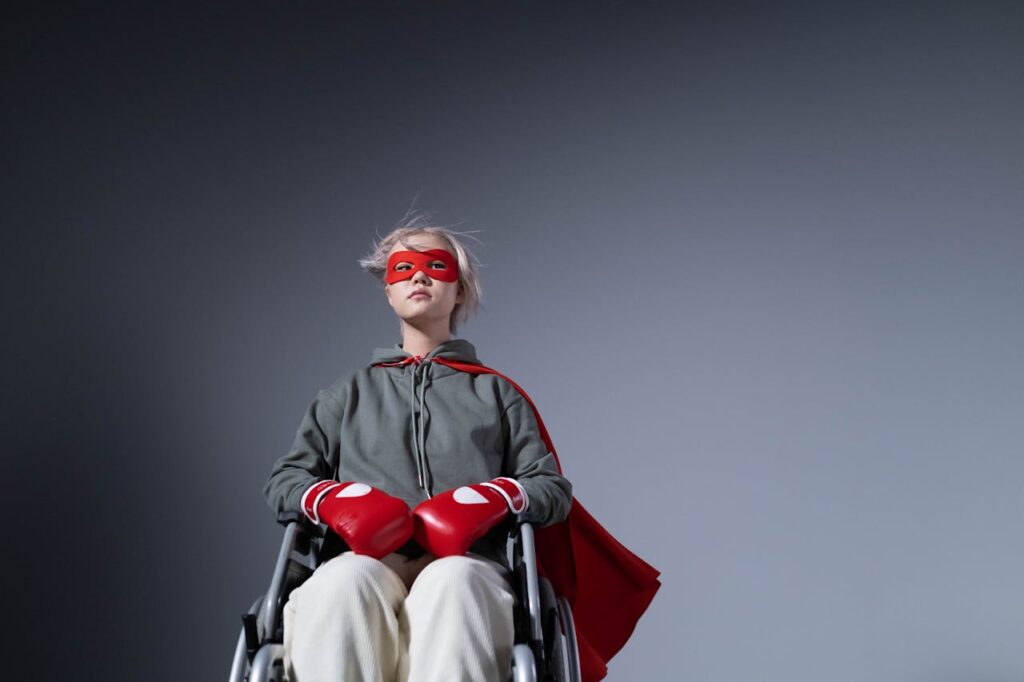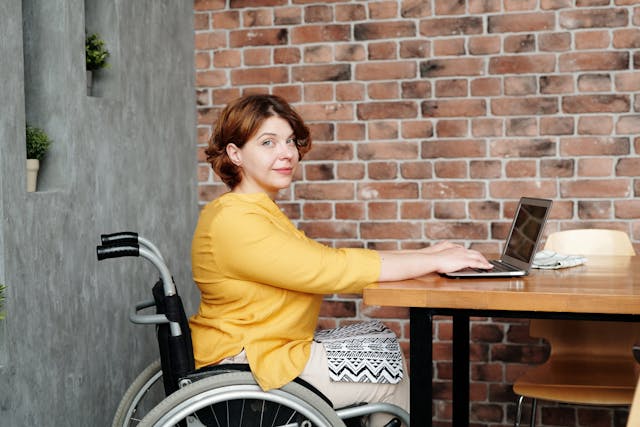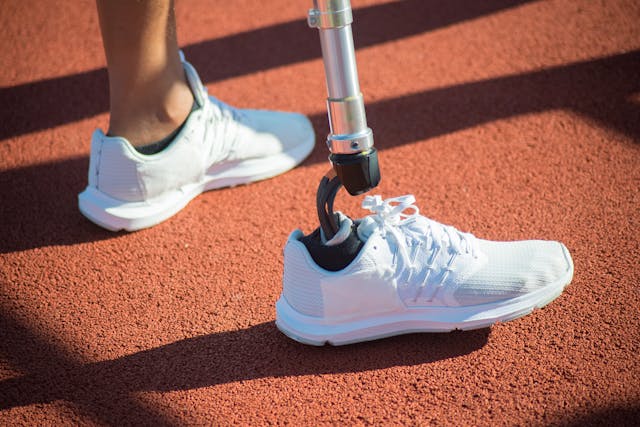Advertising is one of the most powerful tools for shaping public perception. It has the ability to influence opinions, create awareness, and redefine beauty, strength, and success. However, for a long time, disability—especially prosthetic users—has been either ignored or misrepresented in advertising.
Thankfully, times are changing. More brands are realizing that true representation matters, and they are moving away from outdated stereotypes to showcase disabled individuals as confident consumers, athletes, professionals, and trendsetters. But there is still a long way to go.
In this article, we explore how disability and prosthetics are being represented in advertising, the common mistakes brands make, and how companies can create truly inclusive and impactful campaigns.
The Evolution of Disability Representation in Advertising
Over the years, the way disability is shown in advertisements has shifted from invisibility to empowerment.
From Ignorance to Token Representation
For decades, people with disabilities were rarely seen in mainstream advertising. Brands assumed that disability was a niche issue, and disabled consumers were not part of their target market. As a result, advertisements almost never featured prosthetic users, wheelchair users, or individuals with mobility impairments.
When disability did appear, it was often presented through a medical or charitable lens. Many ads focused on pity-driven narratives, showing disabled individuals as people in need of help rather than independent, capable consumers. While these efforts may have raised awareness, they did little to break stereotypes or promote true inclusion.
The Rise of Disability-Inclusive Marketing

In recent years, there has been a significant shift. More brands are recognizing that disabled individuals are active consumers who deserve representation. Major companies like Nike, Apple, Tommy Hilfiger, and L’Oréal have started including disabled models, athletes, and professionals in their campaigns.
Instead of focusing on what disabled individuals “can’t” do, these advertisements celebrate what they can do. Prosthetic limbs are no longer just medical devices—they are being portrayed as fashionable, high-tech, and even aspirational tools for mobility and performance.
Moving Toward True Representation
While progress has been made, many brands still fall into common traps—either using disabled individuals for marketing buzz without real commitment to inclusion, or portraying them in a way that reinforces outdated stereotypes.
To move forward, advertising must not just include disability, but embrace it in a way that feels natural, empowering, and reflective of real-life experiences.
Common Stereotypes About Disability in Advertising
Despite the positive changes, many ads still fall into clichés and stereotypes when portraying disability and prosthetic users.
1. The “Inspiration Porn” Narrative
One of the most common (and problematic) ways disability is shown in advertising is through inspiration-driven storytelling. These ads often show a disabled individual overcoming enormous odds, with dramatic music and a tagline like, “If they can do it, what’s your excuse?”
Why This Is a Problem
- It reduces disabled individuals to motivational tools rather than treating them as equal consumers.
- It puts unnecessary pressure on disabled people to constantly be “inspiring,” rather than just living their everyday lives.
- It shifts focus away from systemic accessibility issues and instead implies that disability is just a matter of personal determination.
2. The “Superhuman” Myth

Another common stereotype is portraying prosthetic users as superhuman, invincible, or technologically enhanced beyond reality. Movies and ads often depict bionic arms that function better than biological ones, making disability seem like a power rather than a lived experience.
Why This Is a Problem
- It creates unrealistic expectations about what prosthetics can actually do.
- It ignores the challenges prosthetic users face, such as cost, maintenance, and comfort.
- It shifts the focus from inclusion and accessibility to unrealistic spectacle.
3. The “Pity-Driven” Approach
Some brands still use a sorrowful, tragic tone when featuring disability, focusing on what has been lost rather than what is possible. These ads often show prosthetic users struggling before experiencing a dramatic transformation—often thanks to a product.
Why This Is a Problem
- It reinforces the idea that disability is something to “overcome” rather than a normal part of life.
- It suggests that disabled individuals need fixing, rather than supporting their independence.
- It turns disability into a marketing tool rather than a real human experience.
To truly break stereotypes, brands need to move beyond these outdated portrayals and embrace authentic, everyday representation of disability and prosthetics.
How Brands Can Create Truly Inclusive Advertising
Companies that want to be leaders in inclusive advertising need to go beyond just putting a disabled person in an ad. Representation must be authentic, thoughtful, and integrated into the brand’s values.
1. Feature Disabled People in Everyday Roles, Not Just “Disability Stories”

One of the simplest yet most powerful ways to normalize disability is to include disabled individuals in everyday ads, without making their disability the main focus.
How to Do This Right
- Show a prosthetic user modeling clothes in a fashion campaign, just like any other model.
- Feature a wheelchair user in a car commercial, discussing comfort and performance like any other driver.
- Include disabled professionals in office-related advertisements, reflecting real workplace diversity.
By integrating disability into everyday scenarios, brands send the message that disabled individuals are not “different” consumers—they are just consumers.
2. Work with Disabled Influencers and Creators
Disabled content creators and influencers understand representation better than anyone else. They bring authenticity, lived experience, and unique perspectives that can help brands create more meaningful and accurate campaigns.
How to Do This Right
- Collaborate with real prosthetic users in product design and marketing, rather than just featuring them in ads.
- Hire disabled photographers, designers, and writers to ensure that inclusion happens behind the scenes as well.
- Engage in long-term partnerships instead of one-time campaigns, proving that inclusion is not just a marketing trend.
3. Make Accessibility a Business Priority, Not Just a Marketing Strategy
Real inclusion goes beyond advertising—it requires actual commitment to accessibility and inclusivity in business practices.
How to Do This Right
- Ensure stores, websites, and services are accessible to disabled customers.
- Develop adaptive products that meet the real needs of prosthetic users and individuals with mobility challenges.
- Support disability advocacy programs and help drive industry-wide change in accessibility standards.
When businesses align their values with their marketing, they build real trust and loyalty with disabled consumers.
How Inclusive Advertising Benefits Both Businesses and Society
When brands embrace authentic disability representation in advertising, they are not just promoting inclusivity—they are also gaining long-term business benefits and driving positive societal change.
1. Expanding Market Reach: Disability-Inclusive Advertising Attracts More Consumers

Many brands overlook the fact that people with disabilities make up a significant portion of the global market. According to the World Health Organization (WHO), over 1 billion people worldwide live with some form of disability. This means that disability-friendly advertising isn’t niche—it’s mainstream.
Why This Matters for Businesses
- Disabled consumers, along with their families and friends, represent a massive purchasing power. When brands embrace disability inclusion, they attract a loyal customer base that values representation.
- People appreciate brands that reflect real-world diversity. Even non-disabled consumers prefer brands that showcase inclusivity because it demonstrates social responsibility and authenticity.
- Inclusivity fosters brand loyalty. When customers see themselves represented in advertising, they are more likely to support and trust the brand, leading to higher engagement and sales.
By recognizing that disabled consumers are active, independent shoppers, brands can tap into a market that has been historically ignored and build meaningful relationships with a broader audience.
2. Building a Positive Brand Reputation and Public Trust
Modern consumers expect brands to stand for something beyond just selling products. Disability-inclusive advertising demonstrates genuine commitment to diversity and social impact.
Why This Matters for Businesses
- Customers are more likely to support brands that align with their values. A study by Accenture found that businesses that prioritize inclusion outperform their competitors financially.
- Brands that include disability in their campaigns receive positive media coverage, helping them stand out as industry leaders in diversity.
- Avoiding tokenism builds long-term trust. Brands that engage in consistent, authentic representation (rather than one-off disability campaigns) create lasting credibility and customer loyalty.
When companies incorporate disability inclusion into their core brand identity, they not only enhance their public image but also contribute to a larger cultural shift toward acceptance and equal representation.
3. Inspiring Innovation in Product Design and Accessibility
Inclusive advertising does more than just change perceptions—it also drives product innovation. Many brands that have embraced disability inclusion in marketing have also developed adaptive products to better serve disabled consumers.
Why This Matters for Businesses
- Leading brands like Nike, Apple, and Microsoft have launched adaptive products after listening to disabled consumers and influencers. This has not only improved accessibility but also expanded their customer base.
- Disability-inclusive design leads to better overall products. Features like voice commands, ergonomic designs, and adjustable clothing benefit all users, not just those with disabilities.
- Companies that invest in inclusive innovation future-proof their brand, as accessibility is becoming a key factor in product design, user experience, and digital technology.
By including disability in advertising, brands open doors to product innovation, leading to smarter, more user-friendly solutions that cater to all consumers.
Brands That Are Leading the Way in Disability Representation

While there is still progress to be made, several brands have already set new standards for disability inclusion in advertising.
1. Nike – Adaptive Sportswear for All Athletes
Nike’s FlyEase line of adaptive footwear was created in response to a letter from a teenager with cerebral palsy who struggled to tie his shoes. The brand responded by designing easy-to-wear, hands-free sneakers, which have since become popular among both disabled and non-disabled consumers.
Nike’s advertising campaigns feature Paralympic athletes, prosthetic users, and individuals with mobility challenges, showing that sports are for everyone.
2. Tommy Hilfiger – Adaptive Fashion for Everyday Wear
Tommy Hilfiger’s adaptive clothing line includes features like magnetic closures, one-handed zippers, and seated-friendly designs for wheelchair users.
Instead of treating disability as an “inspirational” theme, Tommy Hilfiger markets adaptive fashion as just another part of its brand, proving that inclusive design should be a standard, not an exception.
3. Microsoft – Accessibility as a Business Priority
Microsoft has taken accessibility beyond advertising. Their Xbox Adaptive Controller, designed for gamers with limited mobility, was developed in collaboration with real disabled gamers.
Microsoft’s ads show disabled individuals playing video games alongside non-disabled players, promoting true inclusion, not separation.
These brands aren’t just featuring disability in ads—they are making real changes in accessibility, product design, and corporate culture.
How Companies Can Take Action Toward Disability-Inclusive Advertising

For brands that want to embrace true disability representation, advertising must be part of a larger commitment to inclusion.
1. Engage with the Disability Community Directly
Instead of making assumptions, brands should collaborate with disabled individuals, influencers, and advocacy groups to ensure authentic representation.
How to Do This Right
- Hire disabled consultants to advise on advertising campaigns.
- Partner with disabled creators, models, and influencers who bring real lived experiences.
- Conduct focus groups with prosthetic users and disabled consumers to learn what they truly need from brands.
By listening to real voices, companies can create ads that reflect genuine disability experiences rather than stereotypes.
2. Ensure Accessibility in Advertising and Marketing
It’s not enough to feature disabled individuals in ads—brands must also make their marketing accessible to all audiences.
How to Do This Right
- Use closed captions and audio descriptions in video ads for deaf and visually impaired consumers.
- Make websites screen reader-friendly to ensure disabled users can navigate them easily.
- Include braille product packaging, large-print materials, and voice-controlled interfaces for broader accessibility.
When brands prioritize accessibility, they prove that inclusion is not just a marketing tool—it’s a business responsibility.
3. Move Beyond One-Time Disability Campaigns
Many companies feature disability in ads once, then never revisit it. True inclusion means long-term commitment.
How to Do This Right
- Feature disabled individuals in regular product campaigns, not just disability awareness ads.
- Hire disabled employees and support disability representation behind the camera, not just in front of it.
- Integrate disability into company policies, hiring practices, and product development, ensuring real-world impact beyond advertising.
By embedding inclusion into company culture, brands create lasting change rather than temporary representation.
Final Thoughts: The Future of Disability and Prosthetics in Advertising
Advertising has the power to change the way society views disability. When done right, it can normalize disability, challenge stereotypes, and inspire real inclusivity.
At Robobionics, we believe that prosthetic users should be seen, valued, and represented in all aspects of life—including advertising. True representation means:
✔️ Disability is included in everyday advertising, not just “special” campaigns.
✔️ Disabled individuals are shown as consumers, not as inspirational figures or medical cases.
✔️ Brands work with disabled creators, ensuring authenticity in storytelling.
✔️ Businesses back up their marketing with real accessibility initiatives.
The future of advertising is inclusive, diverse, and reflective of all people. By breaking stereotypes and embracing authentic representation, brands can create a world where disability is not an afterthought—it’s part of the mainstream conversation.



